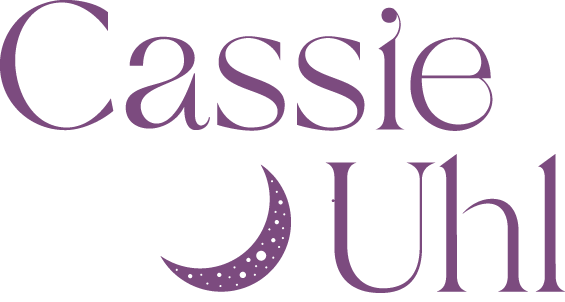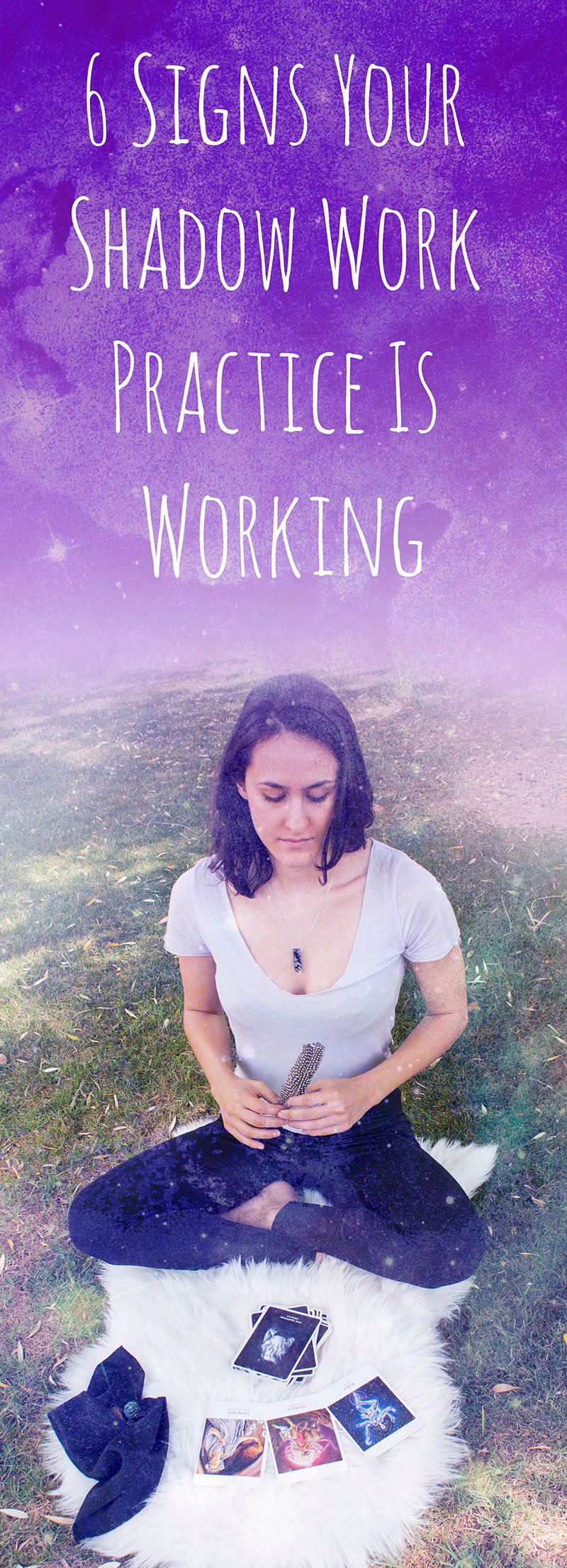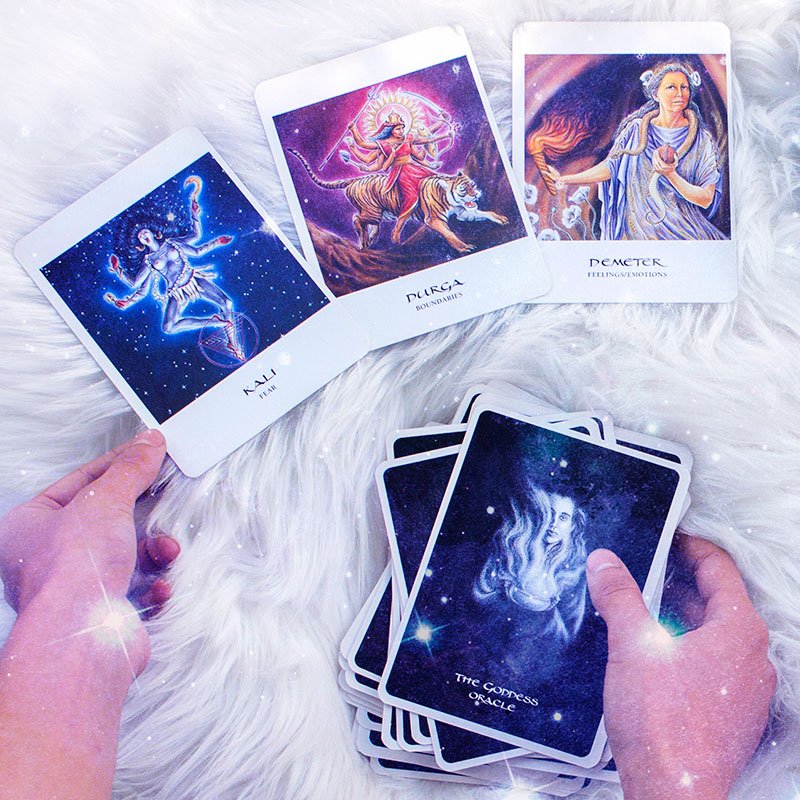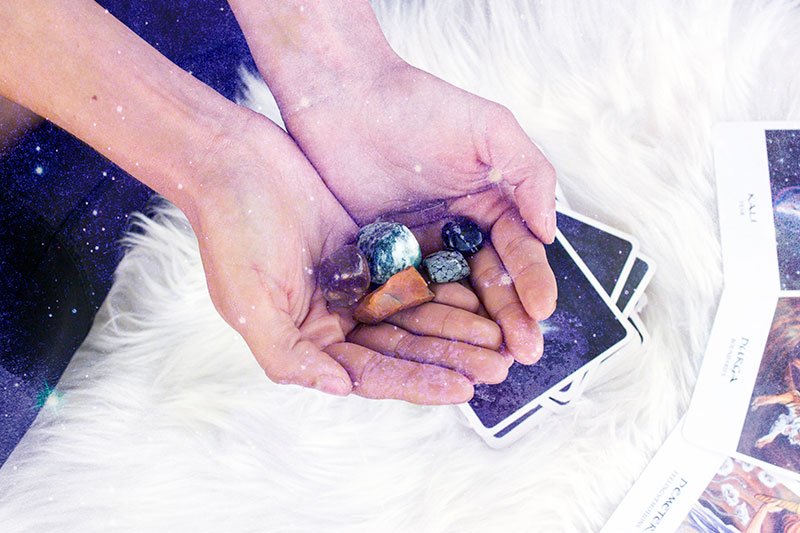6 Signs Your Shadow Work Practice Is Working
We’re often encouraged to ignore our darkness. To pretend that we don’t have inner demons, that we can be all love and light, that we can be “healed” without diving into our wounds.The truth is that we can’t, and that’s where shadow work comes in.Shadow work is the conscious practice of exploring your dark feelings, often ignored in your subconscious, that you feel ashamed and afraid of.
We’re often encouraged to ignore our darkness. To pretend that we don’t have inner demons, that we can be all love and light, that we can be “healed” without diving into our wounds.
The truth is that we can’t, and that’s where shadow work comes in.
Shadow work is the conscious practice of exploring your dark feelings, often ignored in your subconscious, that you feel ashamed and afraid of.
The aim of shadow work is to bring that darkness to the light and integrate it into your whole self. So that you can heal and become whole.
Click to learn more about what shadow work is and 4 simple steps to get started with it.
But once you start working with your shadow, how do you know that it’s really working?
This post will share 6 signs that your shadow work practice is working, moving you towards being a more healed, whole human being.
1. Other people’s behaviors don’t trigger you like they used to. They no longer create intense emotional responses or cause you to go into your head. You notice their behaviors, of course, but no longer feel a need to react or respond.
2. You drop blame and denial. When a shadow aspect of yourself shows up, you don’t deny it and you no longer blame yourself or the person who may have triggered you. You’re learning to acknowledge and accept your shadow, so you may even feel grateful to those who have helped shine a light on it so that it can be transformed and healed.
3. You judge other people (and yourself) less. When you’ve gone into the depths of your own darkness and learned to offer yourself complete acceptance and forgiveness, it’s so much easier to offer that to other people, as well.
You’re able to be much more accepting and compassionate towards others because you realize that your judgments of others stem from your own unhealed places. Once you heal those wounds, other people’s behaviors don’t phase you.
4. You recognize that you have become part of someone’s shadow. According to shadow work expert Jessi Huntenberg, the shadow work journey starts as what was done to you— all the conditioning and fear and wounds you have from your family, your childhood, from society— and slowly you get to a point where you realize that you are someone else’s shadow, too.
When you can realize this and offer yourself forgiveness for the people that you hurt when you were operating from a place of your own wounds, you know that your shadow work is working.
5. You’re no longer afraid to be seen. So many of us have wounds around visibility. We’re afraid to be seen. We feel like if people knew this or that about us, they wouldn’t love us. They would see how “unworthy” we really are.
When your shadow work is really working, that shame around the darkest parts of you begins to dissipate. It gets transformed into acceptance and love. And so you’re no longer afraid to be seen as you really are because you accept and love yourself fully and wholly.
6. Your life has become more peaceful. This is what we all want, right? Shadow work can get you there. Your life becomes more peaceful when you fully embrace and love ALL parts of yourself— the parts that are easy to love and the parts that are really difficult. Your interactions with others, your relationships with others, and your relationship with yourself all become a lot more positive.
What is your relationship with shadow work? Which of these signs are you experiencing?
5 Quick Tips to Improve Your Intuition
Intuition goes by many names: sixth sense, inner knowing, gut feeling. I’m sure you’ve had at least one experience when you “JUST knew.” Maybe it was a safety concern, a work issue, or about a relationship.If you look back you probably didn’t say, “hey intuition, can you please give me some information about…” Nope. The insight came in a flash and you knew exactly what to do.What if you could call on that flash of knowing anytime you wanted? This post will help you do that with 5 simple tips on how to improve your intuition.
Intuition goes by many names: sixth sense, inner knowing, gut feeling. I’m sure you’ve had at least one experience when you “JUST knew.” Maybe it was a safety concern, a work issue, or about a relationship.
If you look back you probably didn’t say, “hey intuition, can you please give me some information about…” Nope. The insight came in a flash and you knew exactly what to do.
What if you could call on that flash of knowing anytime you wanted? This post will help you do that with 5 simple tips on how to improve your intuition. If you want to learn 3 daily actions you can do to support your intuition, check out Cassie's post.
Acknowledge Intuition Exists
It’s innate in everyone, so even if you don’t feel like you have it, know you do. Make a declaration like, “I have a clear and strong intuition,” and observe how your body adjusts.
Clear Some Clutter
Getting rid of junk in your house and mind will create space for new information. Seem overwhelming? Start with just one small area of your house. Try to keep that area neat and tidy (maybe it’s your nightstand or corner of your desk).
Mental and emotional stuff got you weighed down? Dump all that stuff onto paper. No need to analyze or ponder, just freely write down what you are feeling and all the tasks you have to finish. You’ll be amazed at how light you will feel.
Know Your Colors
Here’s a quick exercise to help you connect with your inner knowing. Try this before you get out of bed in the morning. Ask your intuition to give you a color for “yes.” Stay away from the traditional stop light green. That’s too easy. Ask for your individual color for “yes.” Maybe it’s a light orange, or a deep purple. Then ask for your color for “no.” Again, watch for another color aside from red. Maybe it’s grey or bright pink.
Sit with this new information for a few quiet moments and be open for it to appear throughout your day.
Start Small
Now that you have your colors, let’s see how you can use them in everyday scenarios! Your intuition is like a muscle, it likes to be worked out, but you can’t start lifting 100 pounds right away. So start with asking about what shirt you should wear, or which road to take to work. Ask for your “yes” or “no” colors. Go with it!
Trust
Your intuition will get clearer with time and patience. One thing to keep in mind is following your intuition doesn’t mean that life will always go the way you want.
Your intuition is serving as your guide for a deeper purpose for reasons you might not see. Maybe that bad traffic your intuition lead you into was to keep you from something worse. Maybe those “yes” shoes you tripped in means you’ll get to tell a funny story to a new person!
The most important step is to have fun! Don’t worry about getting it right or wrong. Your intuitive power is supposed to bring you closer to who you are, not stress you out.
Developing your inner knowing just takes a few minutes a day. Clear some clutter, use your colors, and trust in your developing “muscle.” Your intuition is the inner gift that keeps on giving so have fun listening to what it has to say! If you are looking to play with your intuition some more, check out my funny and in-your-face oracle cards at www.rebeldeck.com.
Cord Cutting a Ritual for Letting Go
What are you holding onto right now that you’re afraid to let go of? Is it a career that you thought was your life’s calling, something hurtful someone said to you, a relationship gone south, or your lack of control over a situation?If you haven’t already been faced with one of these “letting go” hurdles, it’s likely you will at some point. The need to let go comes in all shapes and sizes throughout life and might be some of the hardest tasks you’ll face.
What are you holding onto right now that you’re afraid to let go of? Is it a career that you thought was your life’s calling, something hurtful someone said to you, a relationship gone south, or your lack of control over a situation?
If you haven’t already been faced with one of these “letting go” hurdles, it’s likely you will at some point. The need to let go comes in all shapes and sizes throughout life and might be some of the hardest tasks you’ll face.
Why is it important to let go?
Holding on can take up a lot of unnecessary headspaces, leaving you anywhere but in the present moment. When you’re afraid to let go, it’s usually your ego that’s in control, and no one wants that! Refusing to let go means you’re also refusing to trust that you’ll be taken care of and that the universe does have a plan for you.
This week I’m breaking out my favorite ways to help you let go of whatever it is that’s holding you back from your highest potential. These rituals can be done on separate days or all together as one big ritual, your choice! Let’s get started.
Step 1: Burn Baby, Burn
Time to get out your candles and cauldron. The first step is to recognize what it is that you’re trying to let go of and become willing to work on it. A burning ritual can help make this decision more concrete for you.
You’ll need:
Black and white candle. The white candle is for protective loving light and black candle is to help absorb negative energy, but any candle will work if you don’t have these colors available. Click here to learn more about candle magick.
Pen and paper
Cauldron or other fireproof vessels
Optional: Frankincense EO or incense. Frankincense will help you center yourself and let go. I like using Plant Guru’s Meditation blend.
The best moon phase to perform this ritual is during a waning moon. Set aside some quiet time, and center yourself with as many deep breaths as you need to feel calm and present.
To get started, light both of your candles and incense, if you’re using it. Write what you need to let go of on a piece of paper. Light the paper with the flame of each candle and place it in your fireproof vessel. Watch and breathe as your paper burns, allow any feelings you have to come to the surface. This is also a great time to call upon any angels, deities, or energy you’d like to invite in to help you through this process.
When you feel like this part of the ritual is complete, thank any spiritual energies that you invited in and blow out your candles. You can leave this setup and the ashes of your burned paper out as long as you’d like as a reminder.
Step 2: Cord-Cutting Ceremony
This is my personal favorite ritual for letting go. I discovered it from The Goddess Oracle by Amy Sophia Marashinsky and is the suggested ritual when you receive the Lilith Goddess card.
You’ll need:
String. Must be strong enough to be worn for a long period of time.
Scissors
Candles, incense, EO (optional and can be the same as above)
This ceremony should also be performed during a waning moon. it blends well into the first ritual and I recommend performing them in tandem, though they do not have to be. If you do start this ceremony separately from the above one, be sure to set aside time to quiet your mind and center yourself.
To begin this ritual, start by deciding where your cord should be tied on your body. You’ll want to tie the string somewhere that connects with what you’re letting go of. If what you’re letting go of has something to do with work and you use your hands you might decide to tie it around your wrist, if you’re walking away from something you could tie it around your ankle, if it has something to do with your creative center you could tie it around your belly.
As you tie your cord on your body say out loud what the cord represents and what it is you’re trying to let go of. Wear this cord for the rest of the moon cycle, or longer if you feel it is necessary, as a reminder of your commitment to let go. When you feel that you are ready to let go and cut the cord, prepare a quiet space to do so. Thank yourself for your commitment and willingness to be more present and let go.
Step 3: Visualize & Verbalize
During this process, you may find that your desire to hold on becomes even stronger. It’s normal and is usually your ego screaming at you to stay in control! Here are some tools to use to keep your ego in check through this process.
Voice and movement are powerful tools to reinforce your commitment to let go. Here are my favorite supportive tools to use:
Woodchopper yoga pose with a loud “HA” exhale
Allow time to shake it out, dance it out, and/or yell it out
Wear a reminder of your commitment to let go.
Create a vision board of what your life would look like if you did let go, and place it somewhere you’ll see it regularly.
Create a mantra about what you’re letting go of. Write it down somewhere and place it where you’ll see it regularly.
Journal. Write out all of your fears associated with what you’re letting go of. I find that if I write out my fears and look at them, many of them are pretty silly and things I don’t have any control over in the first place.
Above all, be gentle with yourself!
Letting go can be hard but I hope my offerings give you the tools you need to move forward in your healing journey. Sending you strength and peace through your process of letting go!
6 Steps to Creating Positive Emotional Anchors
Have you ever wished that you could trigger a certain emotion at any given time? Sure, its healthy to move through uncomfortable emotions in order to heal. However, some negative emotions can become enslaving and stop serving a purpose.Creating positive emotional anchors is a great tool for combatting your daily triggers. Bonus, it’s pretty easy, and you probably have everything you need (maybe even in your purse!).If you’ve had it with overriding emotions of fear, anxiety and depression, I invite you to add this to your enlightened tool belt. Having a go-to emotional anchor is kind of like having your favorite person on reserve for a hug anytime you need it. It may not be a cure-all, but it’s certainly lifted me out of some dark places on the spot.
Have you ever wished that you could trigger a certain emotion at any given time? Sure, its healthy to move through uncomfortable emotions in order to heal. However, some negative emotions can become enslaving and stop serving a purpose.
Creating positive emotional anchors is a great tool for combatting your daily triggers. Bonus, it’s pretty easy, and you probably have everything you need (maybe even in your purse!).
If you’ve had it with overriding emotions of fear, anxiety and depression, I invite you to add this to your enlightened tool belt. Having a go-to emotional anchor is kind of like having your favorite person on reserve for a hug anytime you need it. It may not be a cure-all, but it’s certainly lifted me out of some dark places on the spot.
What Is a Positive Emotional Anchor?
Anchors are what link us between our present emotional state and a more preferred one. You might already use an anchor without even knowing it. Take music, for example. Maybe you’re dreading going into work, your favorite song comes on in the car, BAM your mood is instantly lifted and you’re ready to take on the day.
Unfortunately, hearing a song that reminds you of someone that’s no longer in your life may take you in a fast downward spiral. Scents, sounds, tastes and imagery all have the power to swing you one way or the other.
So, how can you use these to your benefit?
How to Create Your Anchor
Forming an anchor can be simple, it just takes practice. The more you can reinforce your anchor with all of your senses the better. That’s right, pull out the big guns for this one, your favorite scent, mudra, imagery and mantra. Here are some steps to get you started:
What emotional state are you in need of most? Maybe it’s a feeling of safety, calm, happiness, or peace. We’ll build from the emotion you’d most like to bring into your life.
Pick a scent that matches your emotion. I use lavender for mine.
Choose a touch sensation that you can do while smelling your scent. This could be a simple mudra, maybe placing your hand over your heart, whatever feels right to you. Keep in mind you’ll need to be able to do it with one hand and you might need to use this tool in public so maybe don’t use placing your leg behind your head as your touch sensation ;)
Decide on imagery that brings about the emotion you’re aiming for. This could be imagining you’re in a calm forest or simply imagining an object. I use the image of a feather for mine.
Bring something auditory into the mix. This could be a favorite song, though you might not always have this available so a mantra is a great option. It can be something as simple as repeating, “I am safe”, “I choose peace”, or “so hum”.
Now bring all of your tools together for one superpower of an emotional anchor. The next time you start to feel your anxiety or sadness triggered and need a boost, find a few moments to implement all of these at once.
Tip: The more you do this the more ingrained it will become in you. Our negative triggers form over years and this positive one will need time too. Treat this like a mini-meditation practice, the more you use it the more powerful it will become.
The best part is, you don’t have to do all of these things at once. If I’m in a public space but need some calm I’ll hold my mudra and quietly say my mantra to myself for some quick relief.
No matter what emotion you are choosing to anchor, feel relief in knowing that you don’t have to be at the mercy of your negative emotions today. Find power in choice. You have options today.



























